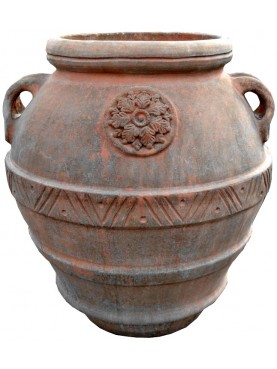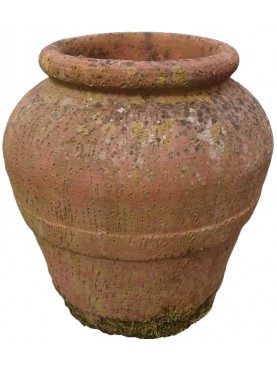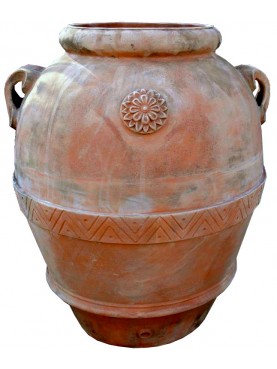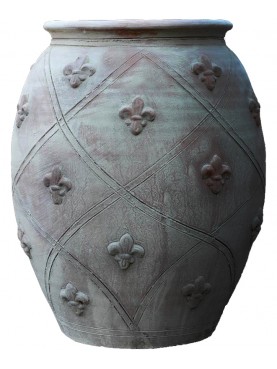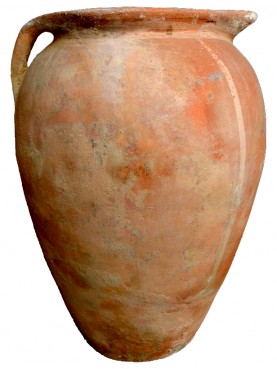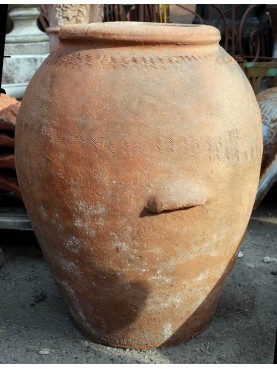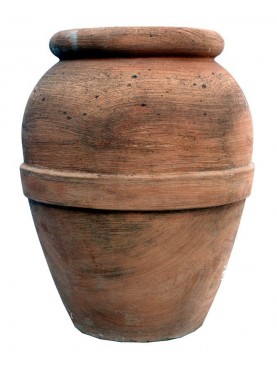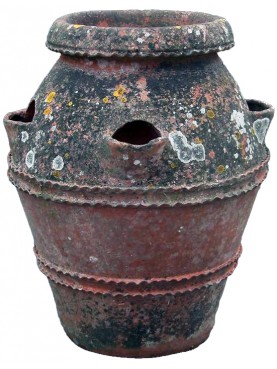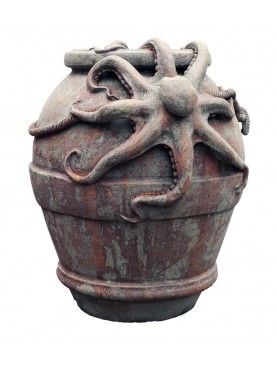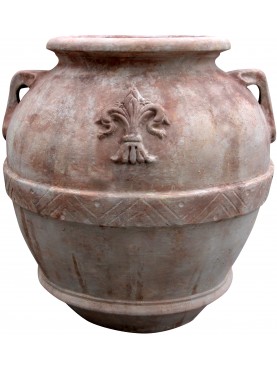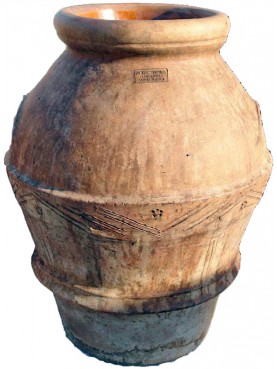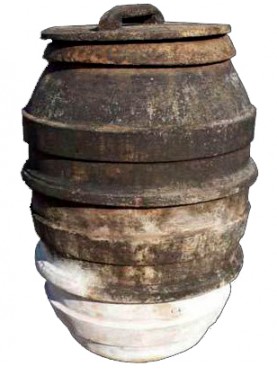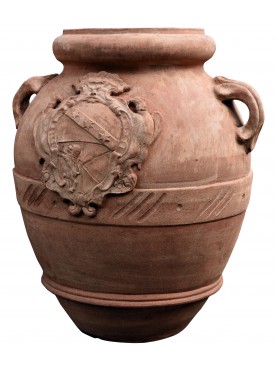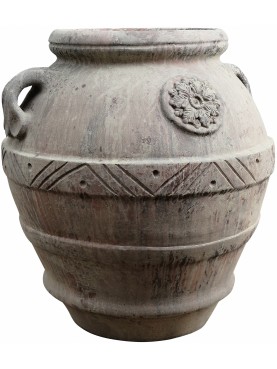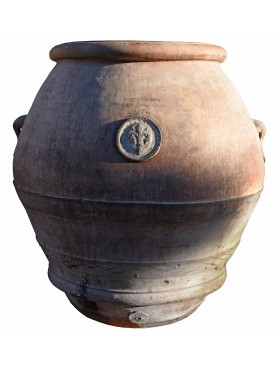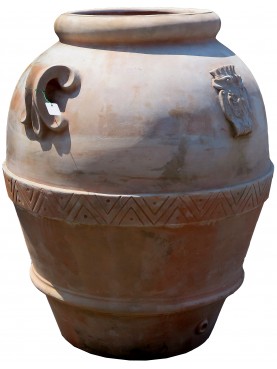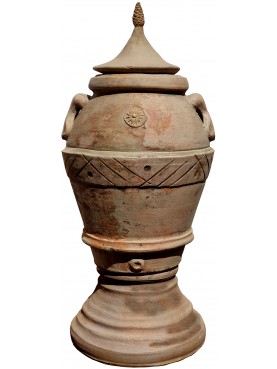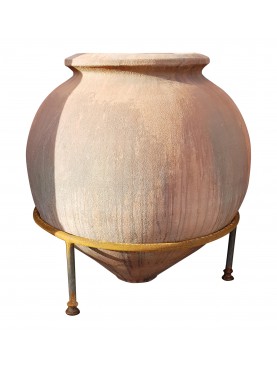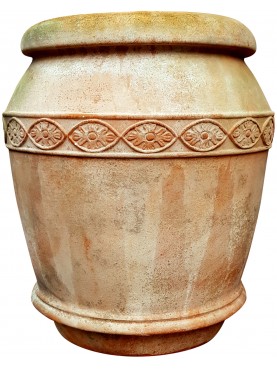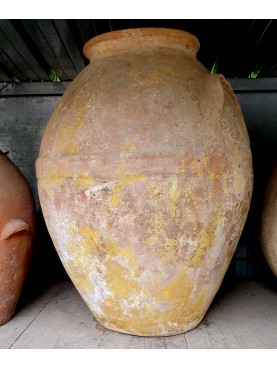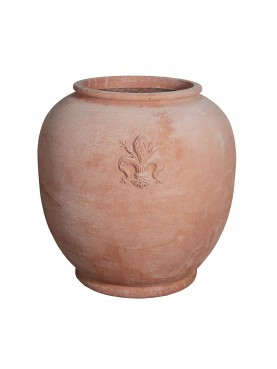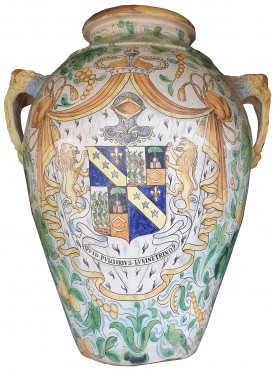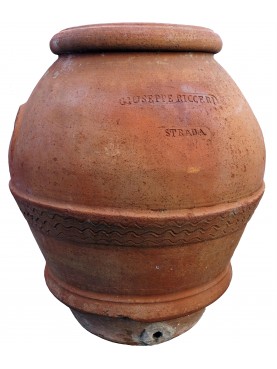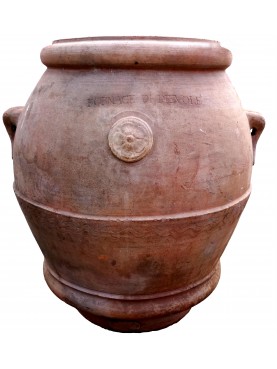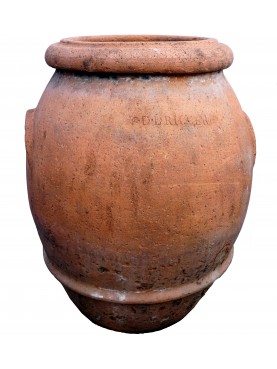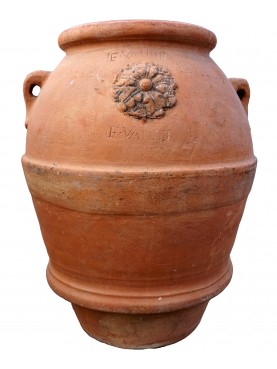RARE Antique jar H.53cm Tuscan for dormouse conservation
RARE Antique jar H.53cm Tuscan for dormouse conservation
10610
New
Rare original jar in ancient terracotta, for the preservation of "live" dormice.
The dormouse (Glis glis Linnaeus, 1766) is a rodent belonging to the Gliridae family; it is the only species of the genus Glis.

1 Available
Warning: Last item in stock!
Data sheet
| Height | 20.87 in | 53 cm |
| Weight | 39.68 lbs | 18 Kg |
| Maximum diameter | 14.96 in | 38 cm |
| Manufacturing | Pistoia | |
| Material | Terracotta | |
| Note 01 | Container for the conservation of the Dormouse |
More info
The jar in our possession is probably from the nineteenth century. In Tuscany on the Apennines the consumption of dormice survived until the 1950s.
The dormice were preserved in pierced jars (bucherellati) of ancient Roman tradition, for over 2000 years until the early 1900s in central Italy the dormice was fattened in these containers.
The glirarium was a terracotta container made up of various compartments used for breeding dormice for food use. The consumption of these small animals, in the Etruscan period and later in the Roman period, was particularly appreciated.
The container consists of a pot, generally in terracotta, pierced to allow air to pass through and closed by a lid on the top. Inside there were two or more terracotta shelves placed against the walls of the same and other holes in the bottom of the vase, generally more numerous than those on the sides. This structure, making the dormice remain in the dark, facilitated sleep.
A well-fed dormouse served at the table often represented the most important course of the banquet and was a clear indication of the wealth of the landlord.
In De re coquinaria a recipe is described which involves the use of edible dormouse as a showpiece of a banquet: after having stuffed the carcass of the animal with pieces of pork and minced offal of the same dormouse, it is necessary to cook it on the burning embers and served with honey and poppy wrap.
The glirarias were externally similar vessels to those used for the preservation of food but they were made in such a way as to make the inside of the container an ideal den for a dormouse: the potters practiced holes for ventilation and created a small opening to supply food the trapped animal without having to open the jar.
A series of shelves along the inner perimeter allowed the dormouse to move in the cage (a primitive version of the "hamster wheel") while a lid kept them almost constantly in the dark.










